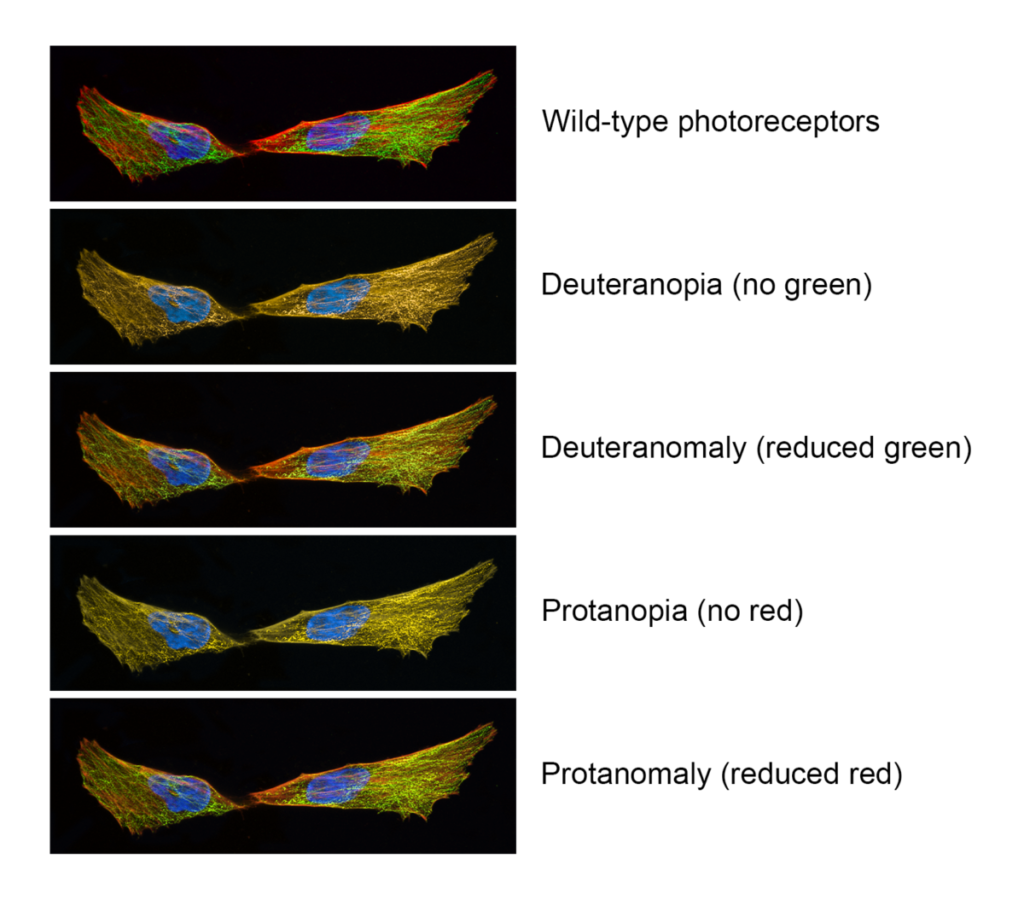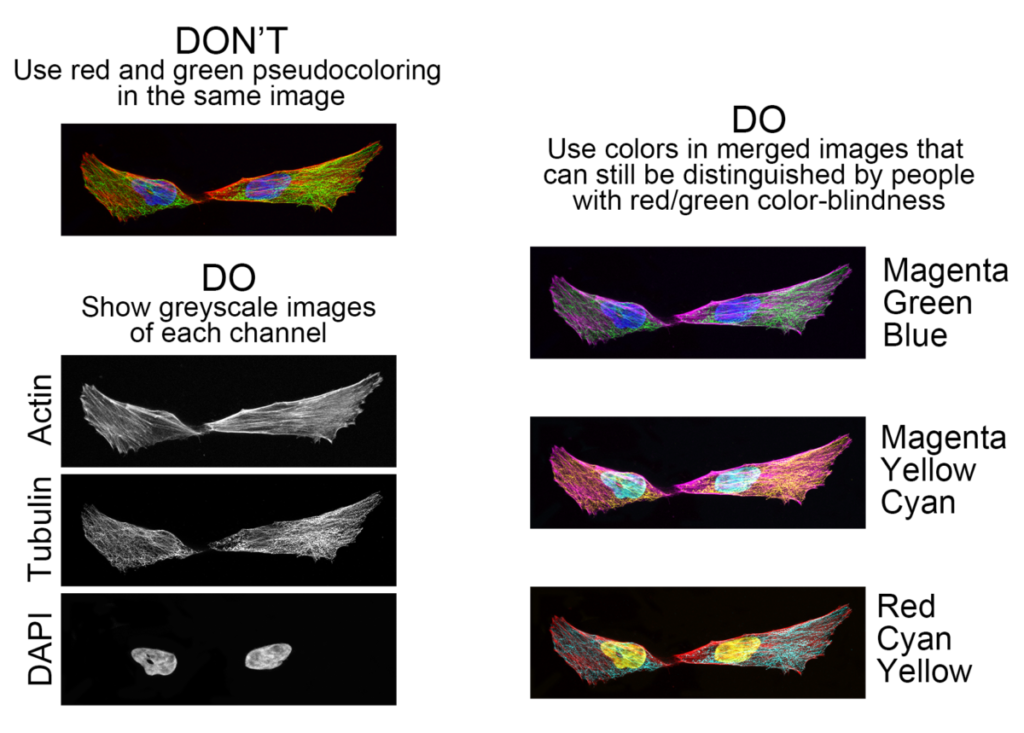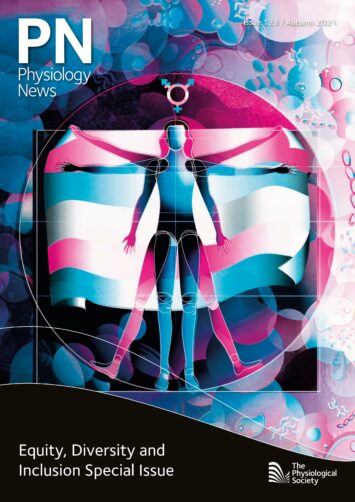
Physiology News Magazine
New colour accessibility policy for The Society’s journals
News and Views
New colour accessibility policy for The Society’s journals
News and Views
https://doi.org/10.36866/pn.123.14
Alex Stewart, Deputy Managing Editor, The Physiological Society
The Journal of Physiology and Experimental Physiology recently adopted a new policy relating to the colour accessibility of our published content. Colour vision deficiency (colloquially known as “colour blindness”) is the inability for individuals to distinguish between certain shades of colour. Red-green colour blindness is the most common form of colour vision deficiency, though other forms exist. Although this condition is far more common in male than female individuals, its overall prevalence is relatively high (around 5% of the global population). Papers using figures or schematics that present information solely through the use of colour therefore risk excluding individuals with this condition.

How might colour inaccessibility look?
Prior to the introduction of this new policy, these readers will have been at risk of being excluded from fully accessing information included in published papers.

What is the impact of colour inaccessibility?
Given the Society’s journals amass upwards of 6 million downloads per year, is it clear a vast number the journals’ readership will have some form of colour vision deficiency. However, it is not just readers who might be affected by colour inaccessibility.
Referees and editors with the condition will have more difficulty assessing research paper quality during the review process. Ultimately, authors who do not consider the usage of colour within their manuscript may not only risk rejection based on misinterpretation during review, but also see their work’s reach and impact reduced upon publication.

The policy
The Society journals’ new accessibility policy ensures that no information is conveyed by colour only. Where this is not possible (e.g. gene expression heat maps), opacity and contrast should be carefully considered. We strongly recommend that authors re-colour figures using accessible colour combinations such as green and magenta or yellow and blue. For micrographs with three or more channels, authors are requested to provide either a greyscale picture of each channel, or a combination of the two most important channels in magenta and green.
